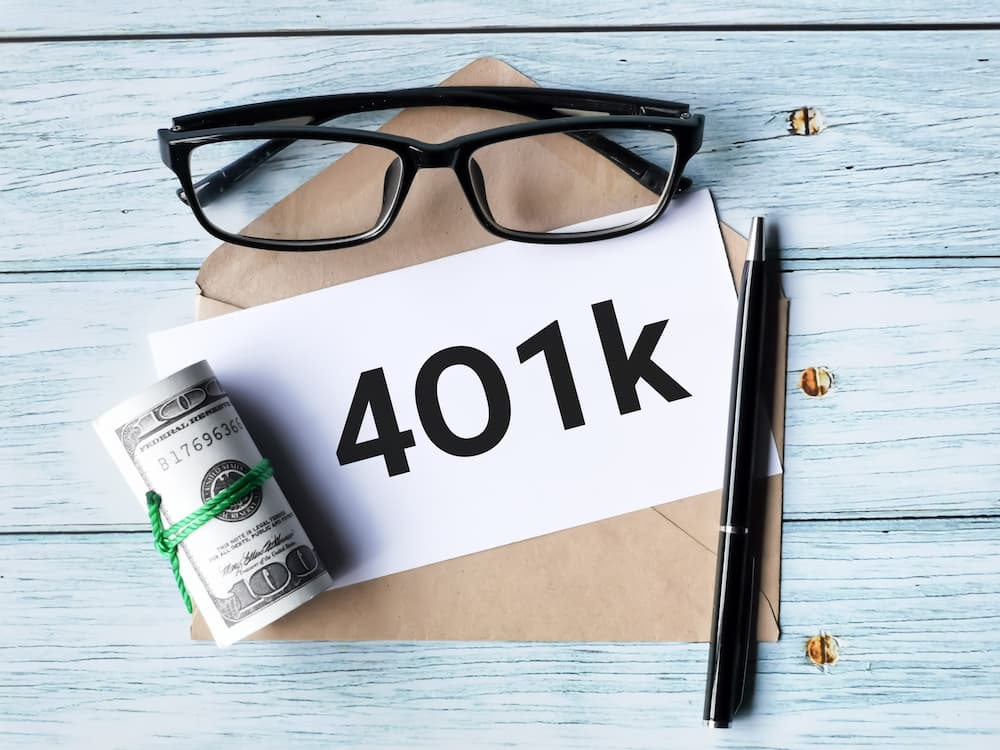Imagine this… you’ve finally reached that long-awaited milestone, the golden years of retirement. You envision days filled with relaxation, hobbies, and quality time with loved ones.
But have you ever pondered whether your finances are ready to support this idyllic lifestyle?
The ever-evolving financial landscape can make retirement planning seem like a herculean task, but fear not – we’re here to guide you on this intricate journey.
In this comprehensive guide, we’ll dive deep into the world of 401k plans for seniors and retirees, exploring the wealth of knowledge that only a seasoned expert can provide.
From the nuances of traditional and Roth 401k plans to investment strategies tailored for your retirement goals, we’ll equip you with the insights you need to maximize your retirement savings and sail into a financially secure future.
So, whether you’re a seasoned investor or just embarking on the retirement planning adventure, join us as we unlock the secrets of 401k plans and pave the way for financial retirement success.
What is a 401k Plan?
The 401k plan is an employer-sponsored retirement savings plan named after the Internal Revenue Code section that governs it.
It enables employees to allocate a portion of their pre-tax income to a retirement account, which they can invest in a diverse range of options such as mutual funds, target-date funds, and even employer stock.
The beauty of a 401k plan lies in its tax-deferred growth, allowing your contributions and earnings to compound over time without being subject to taxes until you withdraw funds during retirement.
Who Offers 401k Plans?
The lion’s share of American employers offers 401k plans as a valuable benefit for their employees.
In fact, many employers sweeten the deal by matching a percentage of employee contributions, effectively providing “free money” to help accelerate retirement savings growth.
When an employer offers both traditional and Roth 401k plans, employees gain the flexibility to tailor their retirement savings strategy based on their current and future tax situations – a critical factor in maximizing long-term wealth.
Difference between Traditional and Roth 401ks
Delving into the key differences between traditional and Roth 401ks, we find that a traditional 401k plan allows you to make contributions using pre-tax income, effectively lowering your taxable income for the year.
This means you pay taxes on your contributions and earnings only when you withdraw money during retirement.
In contrast, a Roth 401k is funded with after-tax income, and while your contributions are not tax-deductible, your earnings grow tax-free, enabling tax-free withdrawals during retirement.
This feature makes Roth 401ks particularly attractive for employees who anticipate being in a higher tax bracket during their golden years.
Keep in mind that withdrawing funds from a 401k before age 59 1/2 may lead to tax consequences, and both traditional and Roth 401ks are subject to annual contribution limits set by the IRS.
Types of 401k Plans
A plethora of 401(k) plan varieties exist, each boasting its own distinctive features and benefits.
Let’s dive into some of the most prevalent types of 401(k) plans and illuminate the key nuances that set them apart.
Traditional 401k
The traditional 401(k) plan reigns as the quintessential option for retirement savings.
With this plan, employees contribute a portion of their income pre-tax, effectively lowering their taxable income for the year. These contributions are seamlessly deducted from paychecks before Uncle Sam takes his cut.
As funds accumulate in the account, they enjoy tax-free growth until distribution during retirement. However, withdrawals at that time are subject to taxation as ordinary income.
Employers often sweeten the deal by matching employee contributions up to a specified limit, amplifying the appeal of this type of plan.
Roth 401k
A Roth 401(k) presents another viable avenue for employees to explore. In this plan, contributions stem from post-tax dollars, meaning the initial tax bite has already occurred.
Although this method sacrifices an immediate tax break, the long-term benefits shine through tax-free earnings and withdrawals during retirement. This route proves advantageous for those anticipating a higher tax bracket upon retirement.
And, much like traditional 401(k) plans, employers may extend matching contributions to Roth 401(k) accounts.
403(b) and 457(b) Plans
The 403(b) and 457(b) plans echo the structure of traditional and Roth 401(k) plans but cater specifically to employees of nonprofit organizations, public schools, and select government entities.
These plans empower employees to allocate a portion of their pre-tax income toward retirement, with funds accruing tax-free growth until withdrawal.
Similar to their 401(k) counterparts, traditional 403(b) and 457(b) plan withdrawals are taxed as ordinary income during retirement, while Roth versions permit tax-free distributions.
SIMPLE IRA Plans
Tailored to the needs of small businesses with a workforce of 100 or fewer employees, SIMPLE IRA plans provide a retirement savings solution without the complexities of larger plans.
Employees channel a portion of their pre-tax income into their retirement account, while employers fulfill their obligation to contribute via either matching or non-elective contributions.
Not only are these contributions tax-deductible for employers, but they also accumulate tax-free growth until retirement. Withdrawals, however, are taxed as ordinary income upon distribution.
The absence of annual nondiscrimination testing, a requirement for traditional 401(k) plans, streamlines the SIMPLE IRA plan process for small businesses.
Automatic Enrollment 401k Plans
Automatic enrollment 401(k) plans strive to bolster employee retirement savings by defaulting to automatic plan enrollment and salary deferrals.
This setup aims to increase plan participation rates and overall retirement savings. Employees can opt out or modify their contribution percentage, but employers must provide a written notice outlining employee rights and obligations under the plan at least 30 days before each plan year commences.
By removing barriers to entry, this type of plan seeks to foster a proactive approach to retirement planning.
Key Features of 401k Plans
Astutely selected investment options within the plan facilitate tax-free growth of these contributions until the golden years of retirement.
The employer’s role is pivotal, as they choose the plan provider, investment offerings, and the plan’s overall design.
Moreover, 401k plans serve as a valuable tax reduction strategy, catering to both long-term savings and immediate tax planning.
Employer Matching
Employer contribution matching serves as a cornerstone of 401k plans, incentivizing employees to save for retirement.
Employers typically match a fixed percentage of their employees’ contributions, thereby accentuating the retirement savings growth over time.
A majority of U.S. employers offer 401k matches, with nearly two-thirds of plan participants reaping the full benefits of their employer’s match.
Savvy employees can capitalize on this opportunity by aligning their minimum contributions to meet their employer’s maximum matching contribution, potentially amassing an additional $83,683 in savings, culminating in a total of $397,497.30 by their retirement age.
Catch-Up Contributions
For employees aged 50 and beyond, catch-up contributions emerge as a vital 401k plan feature. This allows older workers to channel higher contributions into their retirement savings accounts compared to their younger counterparts.
The SECURE Act 2.0 increases the catch-up contribution limit to $10,000, extending its scope to participants aged 62, 63, and 64. Such provisions cater to older workers striving to bridge gaps in their retirement savings.
Even if you’re over 40 and grappling with a retirement shortfall, leveraging catch-up contributions and extending your working years can pave the way to 401k millionaire status.
401k Account Growth and Balances
Data from mid-2021 showcases an 84% YoY growth in 401k accounts with balances exceeding $1 million, reaching 412,000. Concurrently, the average 401k balance swelled by 24% from mid-2018, touching $129,300.
Despite these impressive figures, it’s crucial to recognize the vast discrepancies in individual account balances, influenced by factors such as age, income, and investment acumen.
For example, Fidelity Investments reported a 22.9% decline in the average 401k balance, clocking in at $97,200 in Q3 2022 compared to the previous year.
Contribution Limits and Catch-Up Contributions
For 2022, the 401(k) contribution ceiling sits at $20,500 for individuals under 50 years old. Come 2023, this figure jumps to $22,500.
Meanwhile, if you’re 50 or older, the catch-up contribution provision allows for an additional $6,500 in 2022 and $7,500 in 2023. Consequently, your total contribution limits rise to $27,000 in 2022 and an even more substantial $30,000 in 2023.
Keep in mind that these limits apply cumulatively across all your 401(k) accounts, including those held with former employers. Furthermore, it’s crucial to remember that your 401(k) contributions cannot surpass 100% of your annual earnings.
Catch-Up Contributions for Those Over 50
Suppose you’re over 50 and playing catch-up with your retirement savings.
In that case, you can take advantage of catch-up contributions, which enable you to deposit an extra $6,500 in 2022 or $7,500 in 2023 to your 401(k) on top of the standard limit.
These catch-up contributions aim to help individuals nearing retirement bolster their savings and compensate for any missed opportunities.
Significantly, catch-up contributions also extend to other retirement accounts, such as Traditional and Roth IRAs.
However, it’s worth noting that IRA contribution limits fall considerably lower than their 401(k) counterparts.
In the realm of 401(k) contributions, highly compensated employees (HCEs) face certain restrictions to prevent them from contributing disproportionately more than their non-HCE colleagues. For instance, a company’s tax-advantaged status for retirement plans may be jeopardized if 401(k) contributions from HCEs exceed those of non-HCEs by over 2%.
If you find yourself capped by HCE limits yet still wish to contribute further, consider funneling funds into a retirement account outside your employer-sponsored plan.
It’s essential to keep a close eye on your 401(k) contributions to avoid breaching the established limits, as this could lead to penalties and double taxation if not rectified by April 15.
Should you discover an over-contribution, promptly inform your HR department or plan administrator so they can make the necessary W-2 adjustments and avert potential penalties.
Investment Options in a 401k Plan
Your plan provider and sponsor may present a diverse range of investment choices, from a handful to numerous options.
These typically encompass mutual funds, company stock, and an assortment of other securities such as stocks, bonds, and variable annuities.
It’s important to delve into each investment option and evaluate its potential impact on your portfolio.
Mutual Funds: A Go-to Choice for Diversification
Mutual funds have become a staple in 401k plans, primarily due to their ability to provide diversification across various stocks, bonds, and other securities.
By investing in a mutual fund, you’re pooling your resources with those of other investors, granting you access to a professionally managed, diversified portfolio.
In turn, this helps mitigate risk and potentially generate higher returns over the long haul.
An often-overlooked perk of including mutual funds in a 401k plan is the tax advantage: you can buy and sell them without incurring capital gains taxes.
Consequently, you can reinvest your earnings tax-free until you withdraw the funds during retirement.
Company Stock: Tread Cautiously
While company stock can be a tempting investment option within a 401k plan, it’s not without its risks. If the company underperforms or encounters financial difficulties, your retirement savings could suffer.
As such, it’s vital to diversify your investments to minimize risk and safeguard your nest egg.
Although some 401k plans may offer company stock, it’s generally advisable to cap your exposure to no more than 10% of your overall portfolio.
Adopting this approach helps curtail risk, ensuring your retirement savings remain secure.
Stocks, Bonds, and Other Securities: Balancing Risk and Return
Beyond mutual funds and company stock, 401k plans frequently feature an array of other securities, including stocks, bonds, and variable annuities.
Stocks, which denote ownership in a company, can yield substantial returns over an extended period; however, they also carry higher risk.
Conversely, bonds typically pose less risk than stocks and supply a steady income stream but may generate lower returns over time.
Selecting the most suitable investments for your 401k plan requires careful consideration of factors such as:
- Your long-term financial goals
- Time horizon
- Existing assets
- Job stability
By assessing these elements in conjunction with your risk tolerance, you’ll be better positioned to make well-informed investment decisions for your retirement savings.
For those with other retirement assets—such as IRAs, taxable investments, pensions, or deferred annuities—adopting a more conservative approach to 401k investments can help strike a balance within your overall retirement portfolio.
How 401k Distributions and Withdrawals Work
Navigating the complexities of 401k distributions and withdrawals is vital for seniors and retirees as they strategize their financial journey.
It’s essential to distinguish between the two terms:
“distributions” refer to extracting funds from your retirement account, whereas “withdrawals” specifically denote taking money from your account before the age of 59 1/2.
There are two categories of 401k distributions: qualified and nonqualified.
Qualified Distributions
Qualified distributions occur when funds are withdrawn after turning 59 1/2. These distributions evade the 10% early withdrawal penalty and are taxed based on your prevailing income tax rate.
However, if you have a Roth 401k account, you’ve already paid income taxes on your contributions, rendering qualified distributions from a Roth 401k tax-free.
Upon reaching the age of 73 (for those born between 1951 and 1959) or 75 (for those born after 1960), required minimum distributions (RMDs) must commence from your 401k accounts.
Nonqualified Distributions
Contrastingly, nonqualified distributions involve withdrawing funds before reaching the age of 59 1/2.
These withdrawals incur a 10% early withdrawal penalty in addition to income tax.
Some exceptions to the early withdrawal penalty exist, such as permanent disability, medical expenses surpassing a specific percentage of your adjusted gross income, or court-ordered distribution requirements.
Early Withdrawal Penalties
At times, you might require access to your retirement savings before reaching retirement age. While feasible, it’s crucial to recognize the potential financial implications.
Grasping the rules and exceptions surrounding early withdrawal penalties is pivotal in this regard.
Should you leave your job or face company closures, transferring your 401k funds to a new retirement account can be executed without triggering taxes or penalties.
This process, known as a rollover, enables moving funds from one employer-sponsored plan to another or from a 401k plan to an individual retirement account (IRA) once you’ve departed from your job and are fully vested.
Low down on 401k Rollovers and Transfers
Let’s delve into the critical details and variations between 401(k) rollovers and transfers, as well as the potential advantages and drawbacks of each approach.
Rolling Over a 401k to an IRA
When you transition your 401(k) to an IRA, you’re essentially shifting your nest egg from an employer-sponsored plan to a personally managed account.
This move can unlock a treasure trove of investment options, such as low-cost mutual funds and ETFs, which might otherwise be unavailable in a standard 401(k) plan.
If you’re a serial job-hopper, rolling over to an IRA could be a game-changer in terms of effective retirement fund management.
But, it’s not all smooth sailing: familiarize yourself with your chosen IRA institution’s rollover requirements and account minimums to sidestep any pesky maintenance fees.
Bear in mind that a 401(k) might offer benefits that an IRA lacks – for instance, penalty-free withdrawals at 55. So, weigh up your options judiciously and seek professional advice if needed.
Transferring Funds Between Employer Plans
If you move your retirement nest egg from one employer-sponsored plan to another, you don’t have to cash out. It is beneficial to those seeking to centralize retirement savings or to jump to a new employer’s superior retirement plan with this streamlined approach.
Despite this, not all employer plans allow transfers, and some may impose restrictions or fees on transfers.
So, do your homework – scrutinize the fine print of both your current and prospective plans to ensure a smooth, cost-effective transfer.
Rolling Over a 401k to a New Employer’s Plan
Switching jobs? Consider rolling over your 401(k) to your new employer’s plan.
This move keeps your retirement contributions on track and consolidates your funds in one convenient location.
Before taking the plunge, however, examine your new employer’s plan:
- Are the investment options superior to your current plan?
- What about fees?
If the new plan accepts rollovers and offers a more enticing investment buffet, it might be worth taking the leap.
Tips for Maximizing Your 401k Retirement Savings
To close out our 401k Guide, we’ll take a look at some essential tips, to help you make the most of your 401k plan:
1. Maximize Your Employer Match
Leveraging your employer’s matching contributions is fundamental in optimizing your 401k plan.
This match is essentially “free money,” so failing to capitalize on it would be a missed opportunity.
To reap the benefits, contribute the necessary percentage of your income to receive the maximum match. For instance, if your employer matches 50 cents per dollar for the first 6% of your pay, ensure you contribute at least 6% to secure the full match.
2. Save As Much As You Can, Strategically
Amassing sufficient retirement savings requires consistent, strategic contributions.
Aim to save up to the maximum annual limit, which, for 2023, stands at $22,500 for individuals under 50 and $30,000 for those aged 50 or older.
By saving diligently and capitalizing on the tax-deferred growth of your investments, your retirement nest egg will flourish.
3. Consider a Roth 401(k) for Tax-Free Growth
If your employer offers a Roth 401(k) option, it’s worth considering.
Although you’ll pay taxes upfront on contributions, the earnings and withdrawals during retirement will be tax-free.
This provision is particularly advantageous for younger and lower-income workers who anticipate higher tax brackets in the future.
4. Diversify Your Investments with Finesse
A diversified investment portfolio is integral to mitigating risk and maximizing returns in the long run.
Most 401k plans provide a variety of investment options, including:
- Stock and bond mutual funds
- Stable value funds
- Guaranteed investment contracts
- Variable annuities
- Company stock
Thoughtfully allocate your investments among these options to strike the right balance.
5. Rebalance Your Portfolio with Precision
As you navigate your career and inch closer to retirement, periodically rebalancing your portfolio is vital.
This process involves adjusting assets between different investment options or modifying the allocation of stocks and bonds to align with your risk tolerance and financial objectives.
Regular rebalancing can help minimize risk and ensure your investments are on track.
6. Investigate Plan Options and Fees Thoroughly
To make informed investment decisions, it’s crucial to scrutinize your plan options and associated fees.
As 401k plans typically offer eight to 12 investment options, it’s essential to understand the potential administrative fees or other expenses that may impact your returns.
A thorough examination of your plan’s options and fees will help you gauge their suitability for your investment goals.
7. Delve Deep into Investment Options and Performance
A comprehensive understanding of your plan’s investment options and performance is paramount for making well-informed decisions.
Utilize online resources to research and evaluate your plan’s offerings.
If you find that your plan’s investment options have consistently underperformed over time, consider discussing potential alternatives with your plan’s administrator or HR department.
Conclusion
In the intricate labyrinth of retirement planning, 401k plans serve as a powerful tool for securing a prosperous future.
To harness their full potential, it’s essential to understand the diverse types of plans, contribution limits, investment options, and distribution rules.
By maximizing employer matches, saving strategically, diversifying and rebalancing your portfolio, and thoroughly investigating plan options and fees, you can make the most of your 401k plan to build a financially stable retirement.
As a next step, consider reviewing your current 401k plan, evaluating your investment options, and implementing any necessary changes to bolster your retirement savings.
If you need assistance, consult a financial advisor to guide you in making well-informed decisions for your retirement journey.
Remember, knowledge is power, and understanding the nuances of 401k plans will empower you to create a robust retirement plan tailored to your unique needs and goals.













